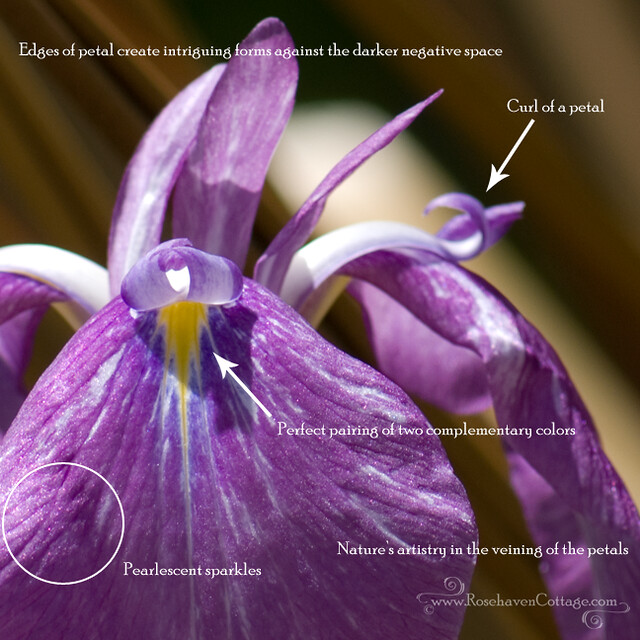Georgia O'Keefe said:
"Nobody sees a flower, really, it is so small. We haven't time - and to see takes time like to have a friend takes time.Her words could be my own. The small and subtle details of the many flowers that grace this earth have drawn me in since I was a small child. And finding a way to celebrate what I see in a flower through my art and photography has been one of my strongest creative motivations both before and after my discovery of Georgia O'Keefe.
"If I could paint the flower exactly as I see it no one would see what I see because I would paint it small like the flower is small. So I said to myself - I'll paint what I see - what the flower is to me but I'll paint it big and they will be surprised into taking time to look at it - I will make even busy New Yorkers take time to see what I see of flowers."
"I decided that if I could paint that flower in a huge scale, you could not ignore its beauty."
"When you take a flower in your hand and really look at it, it's your world for the moment. I want to give that world to someone else. Most people in the city rush around so, they have no time to look at a flower. I want them to see it whether they want to or not."
The two images I've included in this post are a perfect example of what I mean. Below, is a photograph I took last week of one of the Japanese Water Iris that grows and blooms at the pond's edge in the back garden here at Rosehaven Cottage.

This shot is "SOOC" or straight out of the camera. That means that I haven't done any digital editing to it once I imported it into my computer from my camera. I just added a watermark and that's it.
The image at the beginning of this post is the same photo except I cropped it digitally after I imported it into my computer from my camera. It's the same photo of the same flower but looks at what you see now:
Because the flower doesn't automatically register in your mind as, "Oh, that's just a flower", your eye can pay attention to the details that your mind would gloss over otherwise.
- The pearlescent sparkles on the petal of the iris become evident. It's a beautiful detail on most iris petals that is often missed.
- The edges of the petals become more obvious and the forms they create become more striking especially against the darker background that creates the negative space in the composition of the photo.
- Little details like the curl of a petal become strikingly prominent and make your eye follow their fluid flowing lines. Your eye moves through the composition differently because of it.
- The small patch of yellow in the throat of the iris is now the central focus of the photo. Against the purples of the rest of the petal, it becomes an example of a perfect pairing of complementary colors (colors that sit opposite one another on the basic color wheel). Yellow and purples are complementary colors. The combination of red and green is another one. And the pairing of blue and orange is yet another. Complementary color pairings are very pleasing to the eye. And nature is demonstrating this with this flower.
- Nature's artistry is also seen in the beautiful veining of the petals. The lines create symmetry, flow and interest in the photo.







I could sit and stare at flowers for hours. I marvel at the creative process and how all that heart stopping beauty came from a tiny seed. And, how it happens perfectly each time, with each seed. And, how that other seed does the same thing, but creates a different flower altogether. It baffles my mind. Truly.
ReplyDeleteBTW...I'm using that Georgia quote this Sunday. *smile* Not the whole thing, just a tidbit.